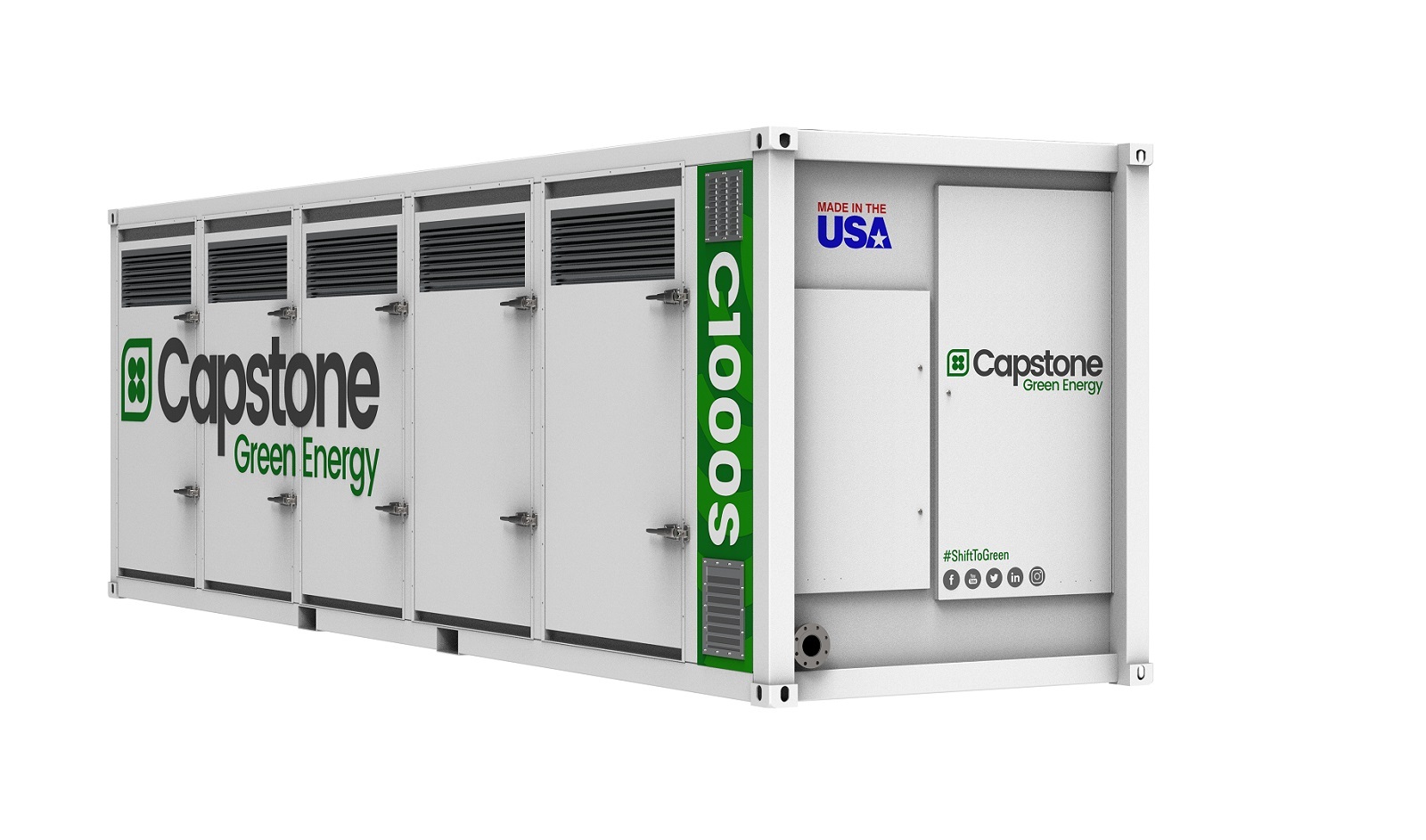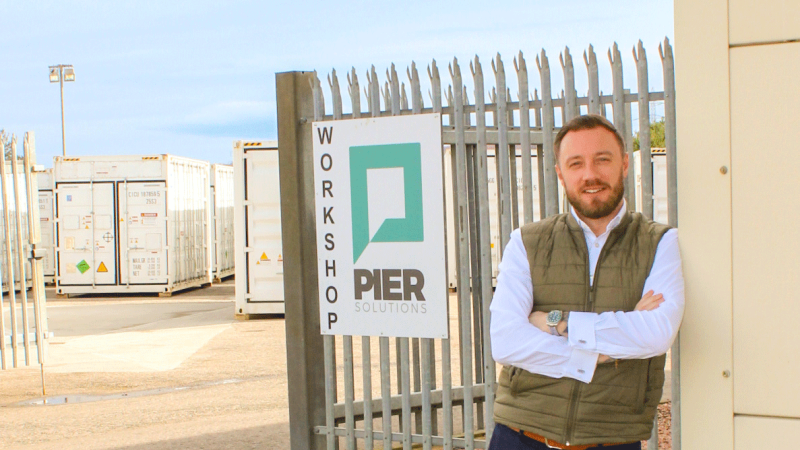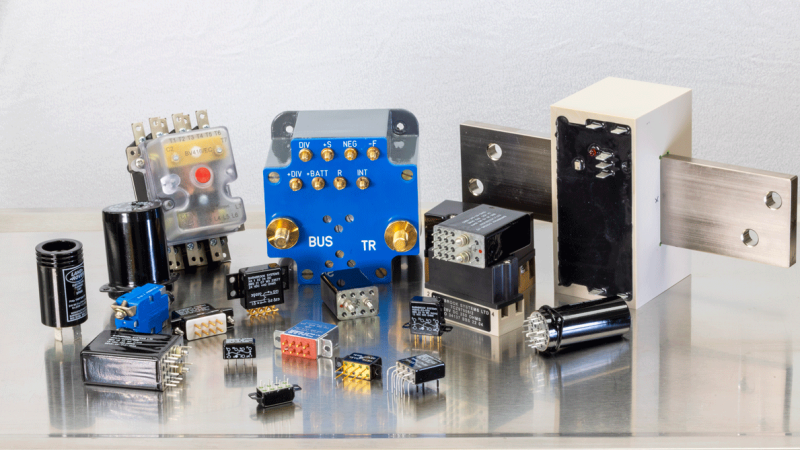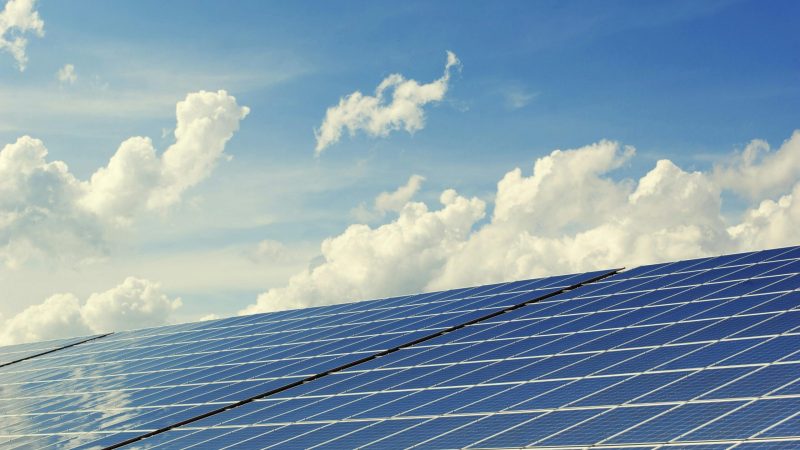It has been over two years since we spoke with Capstone Turbine, a company that had shipped 10,000 microturbines to 83 countries around the world. These microturbines are small, lightweight on-site power generation systems, with a fuel-agnostic combustor which can process a variety of fuels from natural gas and propane to biogas and hydrogen blends.
But today when we return to speak with the company’s President and CEO, Darren Jamison, Capstone Turbine no longer exists. In its place stands Capstone Green Energy. The name change is certainly in line with the vision Jamison shared with us during our last talk.
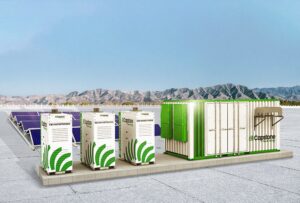 “We’re changing the way the world acquires its energy,” Jamison said. “We are all about lowering energy costs and carbon footprint. Capstone microturbines can run in parallel with the grid or stand-alone operation which gives customers increased resiliency.”
“We’re changing the way the world acquires its energy,” Jamison said. “We are all about lowering energy costs and carbon footprint. Capstone microturbines can run in parallel with the grid or stand-alone operation which gives customers increased resiliency.”
Of course, over the last two years Capstone, and the world as a whole, has been through some significant challenges.
“The last couple of years have been interesting, to say the least, for everybody,” as Jamison says today. “It has been extremely challenging for us and our customers. Oil futures went negative, hospitals were focusing on treating patients, and we do a lot of work in the hospitality sector, which was also heavily impacted during Covid.”
It was an undeniably difficult time, but Jamison also saw it as an opportunity to reassess Capstone’s vision.
“We focused on the parts of the business we could control by broadening our product and service offerings, creating more customer outreach, and using it as an opportunity to run our business more efficiently,” Jamison explains. “We’re now coming out of Covid into greener pastures and more normal operations. We most definitely made the best of a challenging couple of years, making lemonade out of lemons.”
A Change of Identity
Part of that lemonade was the change in identity from Capstone Turbine to Capstone Green Energy.
“Capstone Turbine was only a portion of what we did, and didn’t describe accurately the green energy business we were in,” Jamison says simply. “Capstone Green Energy built on the name and following, emphasizing that green energy is what we’re about not just a power generation company.”
What Capstone Green Energy is really about can be best demonstrated in what it has achieved. The company has achieved $911 million in savings for its customers while reducing its carbon emissions by 1.5 million tons.
“Customers more than ever are looking for green energy solutions and a lower carbon footprint, so we give them economic and environmental calculators to allow them to see the benefits of the products and services we offer,” Jamison says. “We help clients save the planet and save money which is extremely satisfying.”
Energy-as-a-Service
Capstone Green Energy is not just a technology firm, but an Energy-as-a-Service (EaaS) business, offering solar panels, battery storage, thermal energy, and long-term service agreements, including custom-tailored solutions built around customers’ needs. However, the core robust microturbine technology remains at the centre of the company.
“The Capstone highly efficient and low emission microturbine product remains our tentpole, but there are lots of other products and services we offer that complement the microturbines,” Jamison points out.
The EaaS segment of the business in particular is something that Jamison believes is Capstone’s biggest achievement.
“A year ago, we were providing 7 megawatts to customers through EaaS, but we are now providing 39 megawatts, and that will increase to 50 megawatts by next March,” Jamison insists. “We are building a very robust EaaS business. Besides our traditional markets, we have also entered the EV charging, cannabis and cryptocurrency markets. However, the vehicle-charging sector is most exciting to me as the world moves to the electrification of both cars and buildings and utilities will not be able to keep up with demand. EaaS has allowed us to touch more customers and provide solutions for those customers with a lower capital commitment from the end-use customer.”
But while Capstone’s early performance in this sector has been impressive, the company is still new in the market, its reputation is a work in progress, and it is a capital-intensive sector to be a newcomer to.
But Jamison is investing in building that reputation.
“We have over 60 global distributors and partners spreading the news on a daily basis. We go to dozens of trade shows worldwide and we have ramped up our digital marketing,” Jamison explains. “We are showing customers the projects we have completed through written and video case studies. We still use traditional marketing and branding techniques, but we are also finding customers through other methods in certain niches.”
Building the Market
The bottom line is that Capstone Green Energy is a disruptive company, bringing disruptive technology to the market.
“Like any disruptive technology, you not only need the right technology, and for that technology to work, you also need the market to understand and want that technology,” Jamison points out. “We have the right technology working extraordinarily well, but at the beginning, the market was not as interested or did not understand our value proposition. Now the market is changing. People are talking about climate change, sustainability, hydrogen, energy resiliency and a net zero future for the planet.”
Reuse and Recycle
At the same time, Capstone Green Energy is working on reducing its operating expenses and reinforcing its balance sheet. Capstone has shipped over 10,000 machines, and now it has launched a program to go out and find which machines its customers are no longer using. Capstone is then buying back or re-renting those machines, which is both more cost-effective and greener than manufacturing all new units to meet the growing global demand.
“In the second quarter of this year, we generated a million dollars in free cash flow from operations. We are managing the company much more efficiently,” Jamison tells us. “We had a $7 million equity raising project in the US capital markets, and we have a new strategy to find idle machines. One out of three units in our current EaaS fleet has been re-rented or bought back, and it is easy for us to return them to good-as-new condition to build our fleet with a lower cost of capital.”
The re-rental strategy, as part of the EaaS business, will help Capstone reach its ambitious goal of 50 megawatts of generating capacity under contract by March 31, 2023. Once it hits that threshold, the company should begin to generate free cash flow, making the Energy-as-a-Service segment a self-funding business. That is alongside Capstone Green Energy’s traditional product and service business and is before the full launch of the company’s new hydrogen development efforts, which should further improve the firm’s sales.
Ready for a Changing Sector
Jamison is right that there is a growing understanding that the energy sector is changing, and smart solutions will be needed for the energy sector of the future. And despite the new name and a growing portfolio, Microturbines remain the, well, capstone of the company’s offering.
“Microturbines let you manage your own energy destiny, and we are selling them in a more fertile and accepting global market,” Jamison says. “The recent Inflation Reduction Act, which has taken the 10% investment tax credit up to 40%, offers a huge financial incentive for our U.S.-based customers backed by the government. It is the biggest change for our business in the U.S. market we have ever seen.”
This is happening at the same time as similar opportunities in the EU and around the world.
“A lot of countries are trying to build back greener after the pandemic, and that’s music to our ears,” Jamison says.
